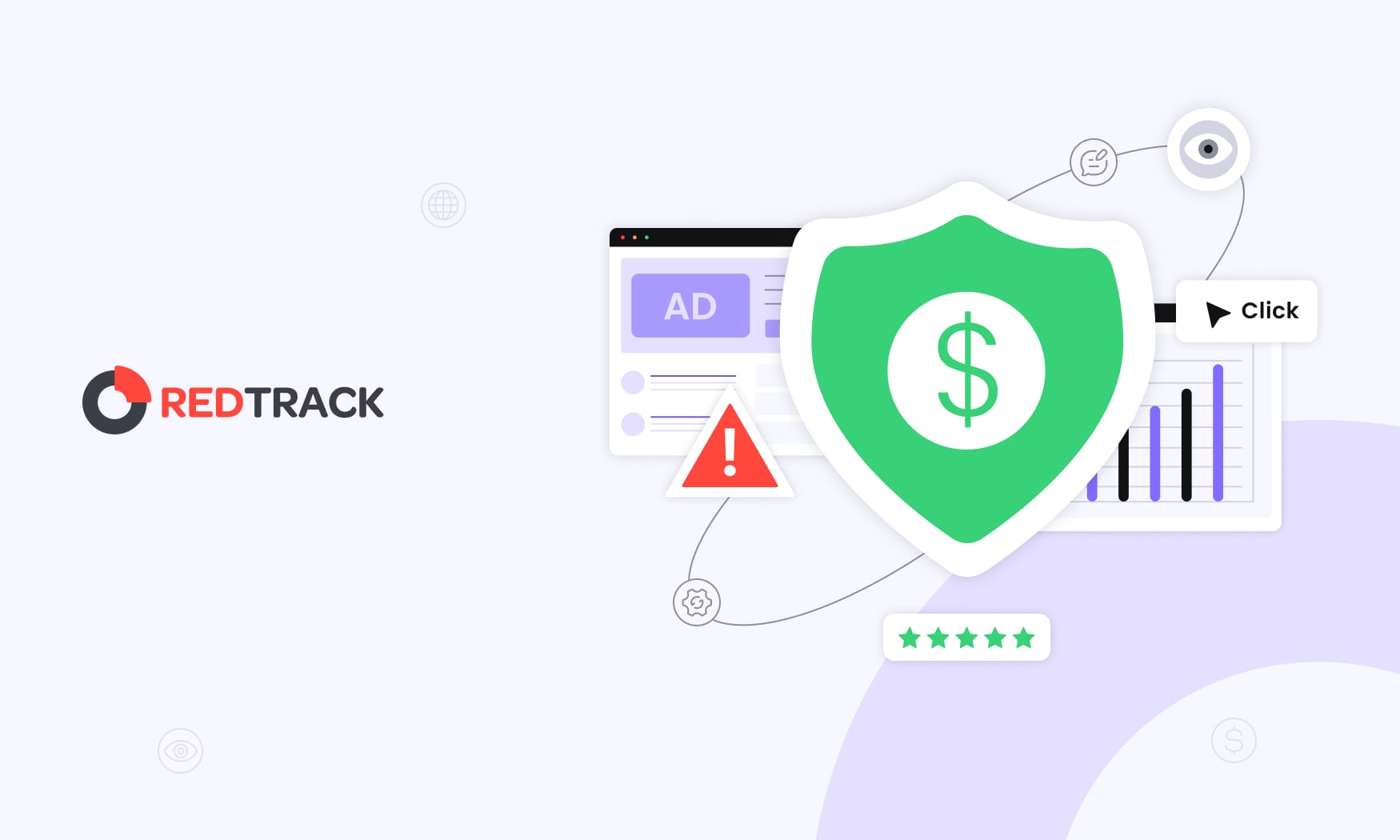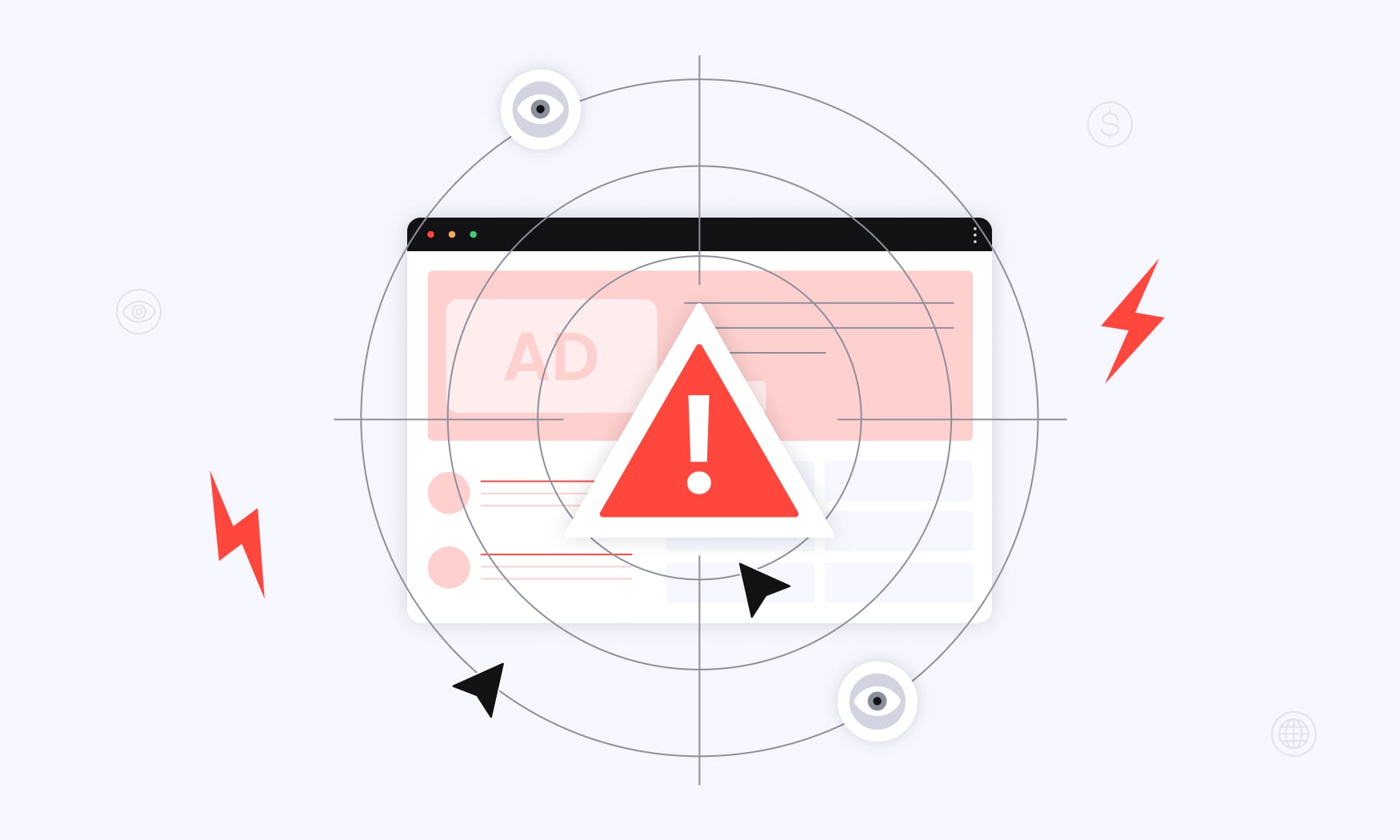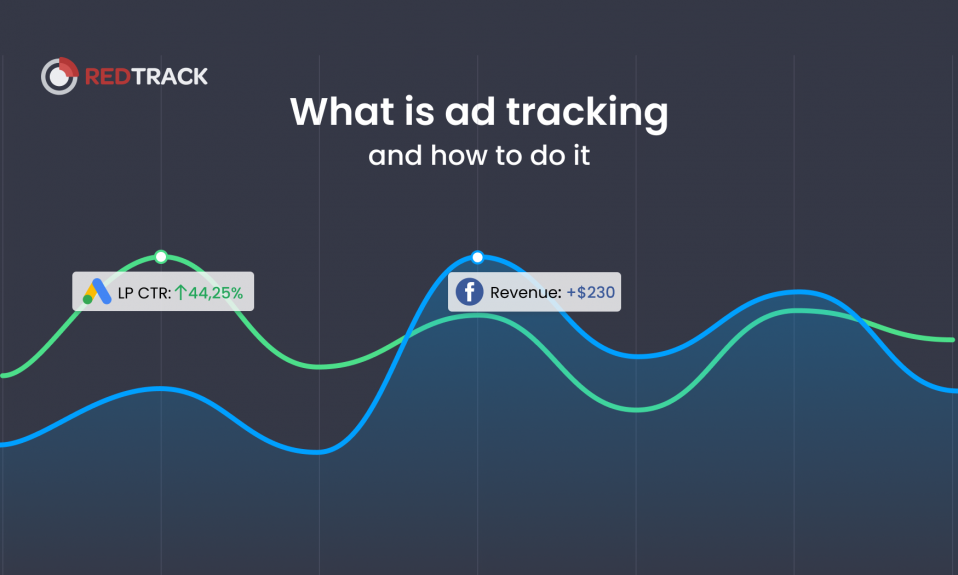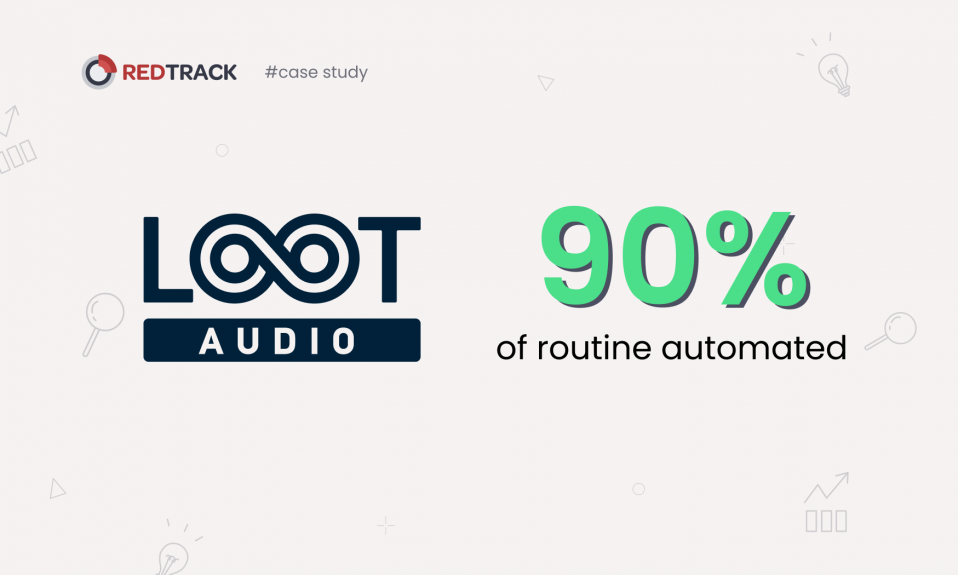
Let’s be honest – ad fraud is every marketer’s worst invisible enemy.
It quietly drains your advertising dollars, floods your campaigns with fake clicks and bot traffic, and leaves you wondering why performance looks great on paper but not in sales.
Learning how to prevent ad fraud isn’t just about stopping waste, but about taking back control of your data, your spend, and your results.
The good news? You can fight back.
With the right mix of smart tools, team awareness, and a few key technical safeguards, you can spot fraud early and stop it before it costs you.
In this guide, we’ll walk through practical, proven strategies to protect your campaigns – from tracking transparency and traffic audits to automation and brand safety. It’s time to make sure every click, impression, and conversion you pay for actually comes from a real person!
Understanding Ad Fraud: What You’re Fighting Against
Ad fraud is one of the biggest threats to your ad spend efficiency – a silent drain on performance that disguises itself as engagement.
It’s built on deceptive practices meant to trick you into paying for fake clicks, impressions, or conversions that never came from real people. At its core, ad fraud is about manipulation – automated systems or bad actors creating activity that looks legitimate but brings zero value.
The scale of the problem is massive, to say at least.
In 2023 alone, U.S. advertisers lost more than $23 billion to fraudulent traffic. That’s not just wasted money – it’s lost opportunities to reach your real audience and drive genuine results.
Every fake click means a potential customer who never saw your ad, every inflated impression means data you can’t trust.
Nearly half of all website traffic today comes from bots, and a large portion of that activity is used to exploit online ads. These bots can imitate human behavior with increasing accuracy – clicking, scrolling, and even filling out forms – which makes traditional detection methods far less effective.
The result? Campaigns that look like they’re performing, while your budget slowly burns away.
And the consequences don’t stop there.
When ads show up on fake or inappropriate sites – often through domain spoofing – your brand reputation takes a hit. People see your ad in the wrong place, and it immediately affects trust. Over time, that misplaced visibility erodes not only your brand image but also your customers’ confidence in it.
Ad fraud isn’t just about lost clicks or wasted money. It’s about losing control over your data, your decisions, and your brand integrity – the very things that fuel profitable growth.
Major Types of Ad Fraud
To effectively fight ad fraud, you need to understand how it works. Each type targets a different weakness in the digital advertising ecosystem – and knowing the signs helps you spot and stop the damage before it drains your budget.
Click Fraud happens when bots or click farms generate fake clicks on your pay-per-click (PPC) ads. The goal? To eat through your ad spend without bringing in a single real prospect. This type of ad fraud can burn through your daily budget fast, stopping your campaigns before they even reach real audiences. Click farms often rely on automated scripts or low-cost labor to create thousands of fake clicks, all appearing to come from unique devices and IPs – making detection even harder.
Domain Spoofing – One of the more sophisticated forms of ad fraud. Fraudsters create fake websites that imitate trusted, high-value publishers. Using deceptive technical tricks, they convince ad exchanges and programmatic platforms that they’re selling premium ad space – when in reality, your ads show up on low-quality or even non-existent sites. The result? You pay premium prices for placements that harm your brand visibility and send fake traffic instead of real users.
Impression Fraud is all about illusion. It includes tactics like ad stacking – layering multiple ads in the same placement so only the top one is visible – or hiding ads in invisible 1×1 pixel spaces. These fake impressions make your metrics look good on paper but offer zero visibility or value. In some cases, dozens of hidden ads can sit behind one visible ad, multiplying your costs without delivering actual reach.
Cookie Stuffing is another sneaky form of ad fraud targeting affiliate marketers. It secretly drops tracking cookies onto a user’s device, claiming credit for conversions that the fraudster never drove. When the user eventually makes a purchase, the fraudster gets paid a commission meant for a legitimate partner. The result? Your performance data gets corrupted, and your real affiliates lose revenue they’ve rightfully earned.
Fake App Installs are one of the fastest-growing ad fraud threats in mobile marketing. Using emulation software and SDK spoofing, fraudsters simulate fake app downloads to generate fraudulent commissions. For advertisers investing heavily in user acquisition, this type of ad fraud inflates install numbers, pollutes campaign data, and wastes budget on non-existent users – leaving you with inflated results and zero retention.
The takeaway? Ad fraud wears many masks – from fake clicks and impressions to spoofed domains and installs. Recognizing each type is the first step toward protecting your ad spend and ensuring your campaigns reach real people, not bots.
Warning Signs: How to Detect Ad Fraud in Your Campaigns

Catching ad fraud early can save your business thousands in wasted spend and protect your campaign performance from serious damage. The impact of ad fraud isn’t just financial – it corrupts your data, misleads your optimization efforts, and distorts your understanding of what’s truly driving results. Recognizing the red flags in time helps you take back control before it’s too late.
1. Unusually High Click-Through Rates (CTRs) – A sudden jump in CTR might look like great performance – until you realize it’s inflated by bots. If your click-through rates skyrocket well above 3–5% without any major changes to your ad creative or targeting, that’s a clear warning sign of click fraud. This is one of the most common forms of business ad fraud, where fake clicks drain your budget and trick algorithms into optimizing toward non-human engagement.
2. Suspicious Geographic Traffic Patterns – One of the easiest ways to spot the impact of ad fraud is by reviewing your traffic sources. If you notice spikes in visits from countries outside your target market – especially during odd hours – you’re likely seeing click farm activity. Genuine audiences follow logical patterns based on time zones, interests, and local behavior. Sudden bursts of traffic from unrelated regions often mean your ads are being “clicked” by automated systems or low-cost human labor, not real prospects.
3. High Bounce Rates with Heavy Click Volumes – When your campaigns show strong click numbers but bounce rates above 80%, something’s off. Real users who click on ads typically engage with your site – reading, scrolling, or exploring offers. If users leave almost instantly, it signals fake or low-quality traffic. This form of ad fraud drains your ad dollars without generating any real engagement or conversions.
4. Short Session Durations and Low On-Site Engagement – Another subtle but telling symptom of business ad fraud is brief session times despite high traffic volumes. Bots can load your pages, trigger tracking pixels, and move on within seconds. Real users, however, spend more time interacting with content, especially when your landing pages match ad intent. If your analytics show high traffic but almost no time spent on-site, take it as a red flag.
5. User-Agent Anomalies and Device Mismatches – A classic telltale sign of ad fraud is inconsistency between your targeting settings and your analytics data. For instance, if you’re running a mobile-only campaign but see desktop user-agents or multiple clicks coming from identical browser setups – that’s not a coincidence. Fraudsters often use emulated environments to mimic traffic, but they leave technical fingerprints that can reveal the deception.
The impact of ad fraud goes beyond wasted spend – it distorts your marketing insights, misguides your decisions, and weakens campaign performance over time. By regularly monitoring these metrics and acting quickly on anomalies, you can prevent fraud from quietly sabotaging your ad results and keep your campaigns delivering value to real customers.
Performance Red Flags
There are certain telltale signs in your campaign data that scream ad fraud – and spotting them early can save you from burning through your ad budget for nothing. When these patterns show up, it’s time to dig deeper and take action fast.
Conversion rates dipping below 1% while your click volumes skyrocket? That’s a major red flag. Sure, conversion rates vary across industries, but when you’re driving tons of traffic and getting almost zero results, it usually means those clicks aren’t from real, interested users. They’re fake – automated, low-quality, or completely fraudulent traffic that will never turn into paying customers.
Huge performance gaps between display ads and social channels like Facebook, LinkedIn, or Google Ads are another clue. If your display campaigns are lagging far behind despite targeting similar audiences, it’s worth questioning the quality of your ad placements. Fraudulent ad inventory can quietly drain performance and distort your real results.
Traffic spikes with no clear cause – no new campaigns, no seasonal trends, no viral moments – are rarely a good sign. Authentic traffic growth always has a reason. When you can’t trace a sudden surge back to your own marketing efforts or a relevant event, you’re probably looking at bot-driven traffic or fake impressions.
And finally, sudden waves of new user accounts that vanish just as quickly are classic signs of manipulation. These fake registrations exist to inflate conversion metrics and make campaigns look better than they are. Keep a close eye on post-conversion behavior – genuine users explore, engage, and return. Fraudulent ones disappear into thin air.
Essential Ad Fraud Prevention Strategies
Preventing digital ad fraud isn’t a one-time fix – it’s an ongoing strategy that combines strong technical safeguards with smart operational habits. These core practices form the backbone of an effective, long-term fraud prevention framework that keeps your ad budget protected and your data trustworthy.
1. Implement ads.txt for Transparency
Start with transparency. Adding an ads.txt file to your website creates a public list of authorized sellers for your ad inventory.
This small but powerful step makes it much harder for fraudsters to impersonate your domain or sell fake inventory. When implemented correctly, ads.txt stops one of the most common types of digital ad fraud – domain spoofing, where scammers pose as premium publishers to siphon ad revenue.
2. Strengthen Account Security with Multi-Factor Authentication
Secure every access point to your advertising accounts – from Google Ads and Facebook Business Manager to DSPs and affiliate platforms. Multi-factor authentication (MFA) adds a crucial layer of defense, ensuring that even if someone gains access to your login credentials, they can’t hijack your campaigns. It’s a simple, often overlooked step that prevents a world of trouble.
3. Partner with Trusted Fraud Detection Providers
Collaborate with specialized fraud detection vendors like Anura, Integral Ad Science (IAS), or DoubleVerify to monitor your ad performance in real time. These solutions leverage behavioral analysis and machine learning to identify suspicious traffic patterns the moment they appear.
When properly configured, these digital ad fraud prevention tools can cut wasted spend by 30–50% within the first month – instantly improving the quality of your ad traffic and ROI.
4. Audit Your Traffic Regularly
Schedule monthly traffic audits to review click patterns, conversion rates, and engagement metrics. By regularly inspecting your data, you can catch red flags – like sudden traffic spikes that don’t match your campaigns or seasonality – before they turn into major financial losses.
Consistent audits help you spot new fraud tactics early and take corrective action fast.
5. Stick to Verified Networks and Private Marketplaces
Whenever possible, limit programmatic ad buys to verified networks or private marketplaces. Open exchanges often lack strict quality control, making them a prime target for digital ad fraud.
Partnering with reputable networks and maintaining a vetted whitelist of trusted domains helps ensure your ads only appear in safe, brand-appropriate environments.
6. Monitor KPIs for Unusual Patterns
Keep a close eye on key performance indicators – CTR, bounce rate, and conversion rate – to detect sudden deviations from normal behavior. Set automated alerts for performance anomalies so you can investigate right away. Abnormally high CTRs or drastic drops in conversion rates often signal bot-driven traffic or click fraud.
7. Educate and Empower Your Team
Technology alone isn’t enough. Continuous team education is critical for long-term protection. Make sure your marketing team understands the most common ad fraud tactics and warning signs so they can act quickly when something feels off. A well-informed team is your first line of defense against evolving threats in the digital ad fraud landscape.
Technical Prevention Measures
Building a strong defense against ad fraud starts with technical precision. Implementing robust safeguards creates multiple layers of protection that detect, block, and prevent fraudulent activities before they drain your budget. These systems work together to ensure your ad campaigns remain accurate, transparent, and profitable – not corrupted by fake traffic or manipulated data.
1. Deploy ads.txt for Transaction Transparency
Every publisher you work with should have an up-to-date ads.txt file in place. This protocol clearly lists which companies are authorized to sell their ad inventory, creating transparency and preventing fraudsters from impersonating legitimate publishers.
For advertisers, verifying that your partners maintain proper ads.txt files is one of the easiest yet most effective steps in preventing wasted ad spend across the digital advertising industry.
2. Leverage Blockchain for Traceable Ad Transactions
Blockchain technology is gaining traction in fraud prevention thanks to its ability to create tamper-proof transaction records. By documenting every impression and ad placement in an immutable ledger, blockchain ensures that no bad actor can alter performance data or insert unauthorized ads into your supply chain.
While still evolving, it represents a powerful transparency layer for future-proof ad campaigns.
3. Use Intelligent Bot Management Systems
Fraudsters constantly develop more advanced bots capable of mimicking human behavior. Modern bot management solutions now analyze detailed user interactions – like scroll depth, click rhythm, and mouse patterns – to differentiate real users from automated traffic.
These tools move far beyond IP blacklists, helping advertisers protect their ad campaigns from bots that quietly drain budgets and distort engagement data.
4. Adopt AI-Driven Fraud Detection Tools
Artificial intelligence plays a central role in today’s fraud prevention stack. AI-powered detection systems analyze hundreds of behavioral and contextual signals in real time, identifying suspicious activity that traditional filters might miss.
Machine learning models continuously evolve, adapting to new fraud tactics as they appear across the digital advertising industry.
5. Enable Real-Time Monitoring and Alerts
The faster you detect anomalies, the less damage they cause. Setting up real-time performance dashboards gives your team instant visibility into campaign metrics like CTRs, conversions, and traffic sources.
Automated alerts can notify you within minutes when a pattern deviates from expectations, allowing immediate corrective action before wasted ad spend spirals out of control.
6. Strengthen with RedTrack’s Unified Tracking and Fraud Protection
For a seamless, automated layer of defense, consider integrating RedTrack into your ad campaign infrastructure!
RedTrack’s server-to-server tracking eliminates pixel manipulation risks and ensures every conversion is verified independently.
Its built-in fraud prevention engine identifies fake clicks, abnormal traffic patterns, and cost discrepancies in real time, helping you act before your budget is compromised.
With cross-channel visibility across 200+ integrations, RedTrack turns fragmented data into actionable insight, empowering you to track, analyze, and optimize campaigns without worrying about hidden fraud.
In a digital advertising industry where threats evolve daily, combining intelligent systems with independent verification tools like RedTrack ensures your protection is proactive – not reactive – and every dollar spent drives genuine performance.
Advanced Fraud Detection Tools
The fight against ad fraud has become more advanced than ever – and so have the tools built to stop it. Modern fraud detection solutions use powerful, data-driven technology to catch fake activity before it eats into your ad budget. The best part? These systems get smarter every single day.
Machine learning algorithms analyze user behavior, device fingerprints, and engagement signals to spot patterns that point to fraudulent activity. They process massive datasets, detecting tiny inconsistencies that human analysts might overlook. As new fraud tactics evolve, these systems learn and adapt, sharpening their accuracy with every impression and click.
IP blocking and geolocation verification add another layer of defense by cutting off traffic from known fraud hubs while keeping legitimate users in. Advanced tools maintain dynamic blacklists that automatically update in real time, filtering out bad IPs without punishing genuine audiences. Paired with behavioral analytics, this approach prevents fraudsters from hiding behind shared networks or proxy servers.
User behavior analysis goes even deeper, tracking how visitors interact with your ads and landing pages. Real users click, scroll, and explore differently every time. Bots, on the other hand, move in predictable, repetitive patterns. These subtle differences – in session duration, engagement depth, and navigation flow – help modern detection systems tell real interest from robotic noise.
Finally, third-party verification services from trusted providers like IAS, DoubleVerify, and MOAT offer independent confirmation that your ad impressions and traffic are legitimate. They deliver detailed reports on viewability, source quality, and fraud indicators, giving advertisers the confidence that every campaign metric reflects reality.
In today’s digital landscape, these advanced fraud detection tools don’t just protect your campaigns – they empower you to invest smarter, spend confidently, and keep your focus where it belongs: driving real results.
Best Practices for Campaign Management to Prevent Ad Scams
Smart campaign management isn’t just about optimizing performance – it’s also about protecting every dollar you invest. By combining careful planning with continuous monitoring, you can reduce your exposure to fraud while maximizing genuine reach, engagement, and return on investment.
1. Partner Only with Trusted Networks and Publishers
Work exclusively with accredited ad networks and verified publishers that enforce strict traffic quality standards and fraud prevention measures. Reputable networks invest in advanced ad fraud detection tools to screen out invalid clicks and impressions before they reach your campaigns.
This level of transparency ensures your ads appear only in legitimate environments and helps you focus your efforts on authentic engagement.
2. Audit Campaigns and Traffic Regularly
Conduct monthly performance audits to stay ahead of emerging fraud trends. Review traffic sources, conversion data, and key engagement metrics to identify irregular patterns early. Consistent audits help establish benchmarks for normal performance, making it easier to pinpoint when something isn’t right.
Over time, this habit becomes one of the simplest yet most effective defenses against evolving fraud tactics.
3. Automate Alerts for Suspicious Patterns
Set up automated monitoring and alerts for anomalies such as sudden traffic surges, unexpected geographic sources, or drastic drops in conversion rates. Automated tracking helps you act fast, stopping fraudulent activity before it drains your ad budget.
Quick detection is critical when you’re trying to track ad spend accurately and prevent small inconsistencies from snowballing into major financial losses.
4. Maintain Whitelists and Blacklists
Keep an updated whitelist of trusted domains and publishers to ensure ads appear only in approved locations. At the same time, manage an active blacklist of suspicious or low-quality sources to block repeat offenders.
While whitelisting provides greater control over ad placements, both lists are essential parts of a layered fraud prevention strategy that works hand-in-hand with your ad fraud detection tools.
5. Enforce Industry Viewability Standards
Implement viewability standards based on Media Rating Council (MRC) guidelines, which require at least 50% of an ad’s pixels to be visible for one continuous second. This ensures you’re paying for impressions that are actually seen by users – not for hidden, stacked, or invisible placements that inflate your reports.
By pairing these best practices with reliable ad fraud detection tools and consistent tracking to monitor ad spend, you build campaigns that not only perform but also protect. The result? Stronger data, cleaner traffic, and higher confidence that every click and conversion is real.
Team Education and Processes
Technology alone isn’t enough to stop ad fraud – your people and processes play an equally critical role. Building strong organizational knowledge and clearly defined procedures ensures consistent application of transparency and fraud prevention measures across all campaigns and team members.
Train marketing teams on the 15+ known types of ad fraud, including emerging threats such as pixel stuffing and SDK spoofing in mobile advertising. Regular, hands-on training sessions keep teams up to date with new fraud tactics and help them recognize early warning signs in campaign data. A well-informed team is faster, more confident, and far better equipped to protect your campaigns.
Establish clear protocols for investigating suspicious campaign performance, complete with defined escalation paths and response timelines. When everyone knows exactly how to react to potential fraud, your team can act quickly to minimize damage and gather better insights for future prevention.
Consistency and clarity in response procedures make your entire fraud defense process stronger and more efficient.
Create documentation of every fraud incident, the preventive actions taken, and the lessons learned. Over time, this builds an internal library of knowledge that helps new team members get up to speed quickly and keeps your prevention strategy evolving.
Documenting outcomes promotes accountability and supports a culture of continuous learning around transparency and fraud prevention.
Encourage customer feedback about suspicious websites, phishing attempts, or inappropriate ad placements that could indicate your ads are appearing in fraudulent environments. Customers often notice problems before automated systems do, and their feedback can be an invaluable early alert system. By incorporating their insights, you strengthen your brand safety efforts and reinforce a proactive, transparent approach to ad fraud prevention.
Protecting Your Brand from Fraud Consequences & Bot Traffic

Ad fraud doesn’t just waste your advertising budget – it can seriously hurt your brand’s reputation when ads appear in the wrong places or alongside harmful content. Protecting your brand means staying alert, using the right tools, and taking proactive steps to maintain trust and credibility at every level.
Monitor brand mentions and ad placements across the web to ensure your ads never appear on illegal websites or in contexts that clash with your brand values. Modern brand safety tools can automatically scan millions of pages, flagging risky placements before your customers ever see them.
The goal is simple: your ads should only appear where they make sense and where they reflect positively on your brand.
Use advanced brand safety tools to block ad placements on sites that host illegal material, hate speech, or other content that conflicts with your company’s ethics. These tools rely on constantly updated databases of problematic domains, ensuring your ads avoid dangerous contexts entirely. Think of them as your digital security guards – working behind the scenes to keep your reputation safe.
Implement strong compliance measures to meet growing regulatory requirements around advertising and data protection. Staying compliant not only helps you avoid legal complications but also shows that you take responsible advertising seriously. In an industry under increasing scrutiny, ethical practices are an important way to set your brand apart.
Maintain transparency with your stakeholders by openly sharing your fraud prevention efforts and investments. Regular reports on your brand protection activities build confidence among customers, partners, and advertisers alike. Showing that you care about ethical, legitimate advertising goes a long way toward earning lasting trust.
Consider the legal implications of fraudulent ad placements, especially if you operate in regulated industries where context is critical. Consulting legal experts helps you understand potential risks, liabilities, and how to strengthen your protection policies. A thoughtful, proactive approach to brand safety not only minimizes risk – it reinforces the professionalism and integrity your brand stands for.
Conclusion – Measuring Success and ROI of Fraud Prevention
Understanding how well your fraud prevention efforts perform is essential to proving their value and optimizing your advertising campaigns and overall digital marketing strategy. Measuring results not only validates your investment but also helps you identify what’s truly protecting your advertising dollars and driving long-term performance.
Start by tracking cost savings from prevented fraudulent clicks, impressions, and bot traffic. Compare campaign performance before and after deploying fraud detection tools to calculate both the direct savings from blocked fake traffic and the indirect gains from better audience targeting and cleaner data.
Next, monitor conversion rates and acquisition costs. As fraud prevention filters out invalid traffic, the quality of your audience improves – leading to higher engagement, stronger conversion rates, and lower cost per acquisition. It’s a clear signal that your campaigns are reaching real users, not automated clicks.
Evaluate targeting accuracy and reduced ad waste by analyzing how fraud prevention impacts your ability to connect with genuine prospects. Once fake interactions and bot traffic are eliminated, your remaining advertising dollars work harder – focused entirely on real people who are ready to convert.
Don’t overlook brand reputation and stakeholder trust. Survey your customers, monitor social channels, and collect feedback to measure improvements in perception and confidence. Protecting your brand from fraudulent placements and inappropriate contexts doesn’t just preserve trust – it strengthens it.
Finally, calculate the ROI of your fraud detection efforts by comparing prevented losses against tool costs. Between recovered budget, improved campaign performance, and stronger targeting precision, most businesses see their fraud prevention investments pay for themselves within months.
This is where RedTrack makes a measurable difference.
With server-to-server tracking, built-in fraud detection, and real-time cost analysis, RedTrack gives you complete transparency over where your advertising dollars go – and what traffic is worth paying for. It filters fake clicks, flags suspicious traffic sources, and lets you track ROI across every channel in one unified dashboard.
The truth is, ad fraud will keep evolving.
But with proactive strategies and tools like RedTrack, you can stay one step ahead – protecting your budget, improving your campaign efficiency, and ensuring your digital marketing efforts reach real customers, not bots.
If you’re ready to stop wasting spend and start tracking every click that truly counts, try RedTrack today – and make every ad impression work toward genuine growth.












